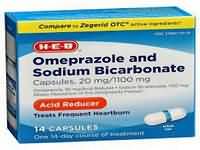CLINICAL USE
Metabolic acidosis Alkalinisation of urine Renoprotection against contrast media
DOSE IN NORMAL RENAL FUNCTION
Oral: 0.5–1.5 g 3 times daily (or more may be required)IV: 8.4%, 60–120 mL per hour; 4.2%, up to 120 mL per hour; 1.26% or 1.4% – see ‘Other Information’
PHARMACOKINETICS
DOSE IN RENAL IMPAIRMENT
GFR (mL/MIN)
DOSE IN PATIENTS UNDERGOING RENAL REPLACEMENT THERAPIES
IMPORTANT DRUG INTERACTIONS
Potentially hazardous interactions with other drugsIncreases lithium excretion
ADMINISTRATION
Reconstition
–
Route
Oral, IV, central administration for undiluted infusion
Rate of Administration
–
Comments
–
OTHER INFORMATION
Caution – may result in sodium retention and oedemaSodium bicarbonate 1.26% or 1.4% may be given IV to prevent the nephrotoxicity associated with scans or procedures involving radiological contrast media. A typical hydration regimen is 3 ml/kg/hour for 1 hour prior to the procedure, followed by 1 mL/kg/hour for 6 hours afterwards8.4% ≡ 1 mmol bicarbonate + 1 mmol sodium per mL500 mg sodium bicarbonate tablet ≡ 6 mmol sodium + 6 mmol bicarbonateSodium bicarbonate reduces serum potassium concentrations by inducing a shift of potassium ions into the cellA sugar free raspberry flavoured oral solution of 8.4% sodium bicarbonate is available from Martindalesodium bicarbonate.

